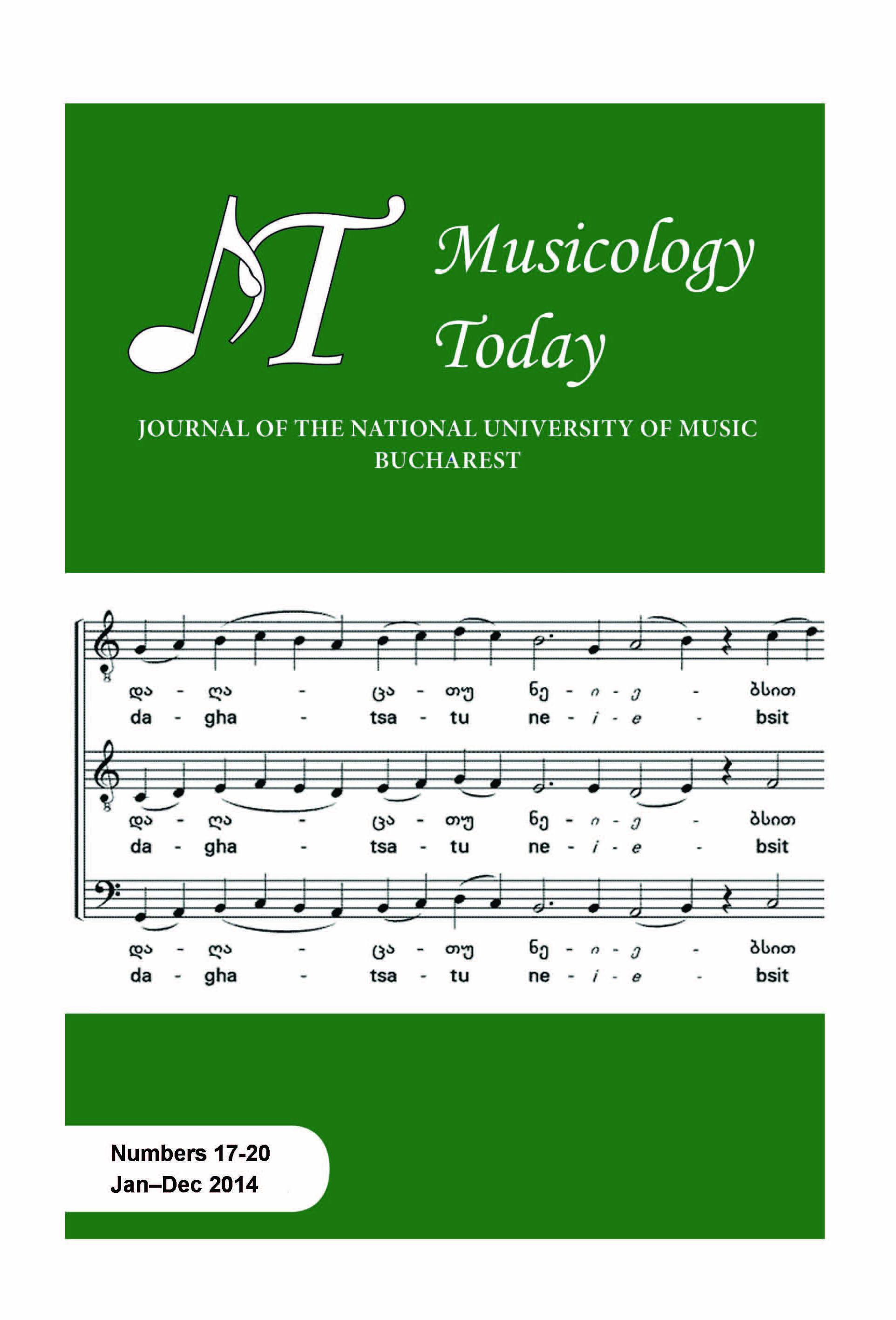Désordre by György Ligeti: Analytical Remarks
Désordre by György Ligeti: Analytical Remarks
Author(s): Mihai MurariuSubject(s): Music
Published by: Editura Universității Naționale de Muzică din București
Keywords: Désordre by György Ligeti; new techniques and acoustic effects; pedagogical value in musical composition;
Summary/Abstract: György Ligeti’s Études pour piano are some of the best known and most influential works in the late half of the 20th century. Representative for the composer’s aesthetic preferences at the time, the Études are both traditional and innovative, maintaining the idea of virtuosic pieces while experimenting with new techniques and acoustic effects. This study is focused on the analysis of the first étude, Désordre, and follows a compositional point of view. The description of the different structures and types of reasoning will therefore take precedence over the performance concerning topics.Given the nature of the work, the analysis is structured according to the different parameters of the musical discourse, starting with the most obvious, rhythm, and then continuing with melody, harmony, etc. When necessary and/or relevant, parallels or comparisons between different parameters are formulated. The conclusions of the study are meant to evaluate the relationship between the composer’s intentions and the means chosen to put them into practice on one hand, and the actual acoustic results of those chosen means, on the other. Given the actual transparency of the construction process and techniques, I also try to emphasize the work’s pedagogical value in musical composition, as opposed to the customary pedagogical value in performing of an étude.
Journal: Musicology Today: Journal of the National University of Music Bucharest
- Issue Year: 5/2014
- Issue No: 17
- Page Range: 12-35
- Page Count: 24
- Language: English

